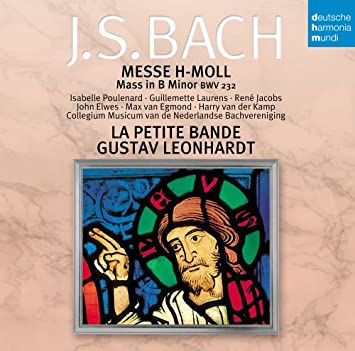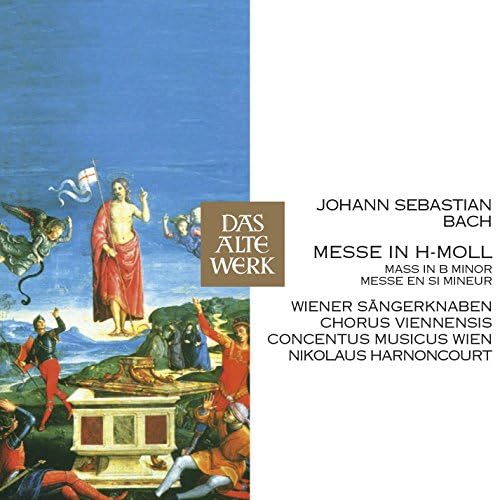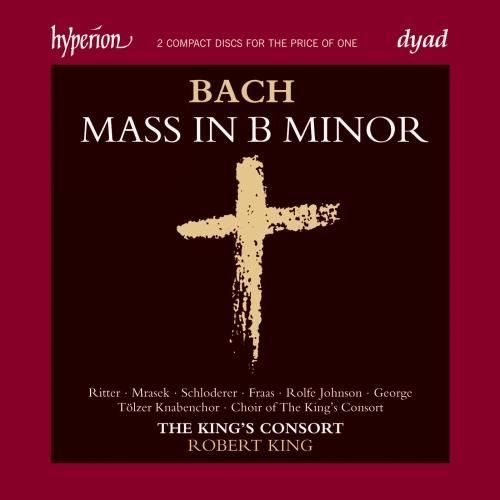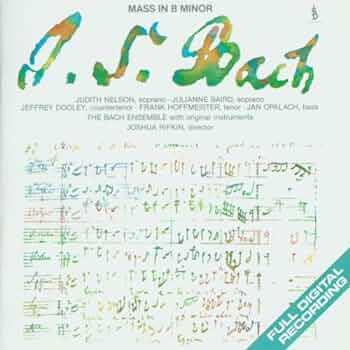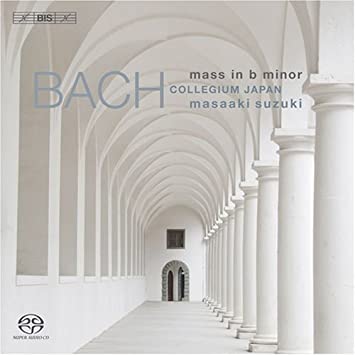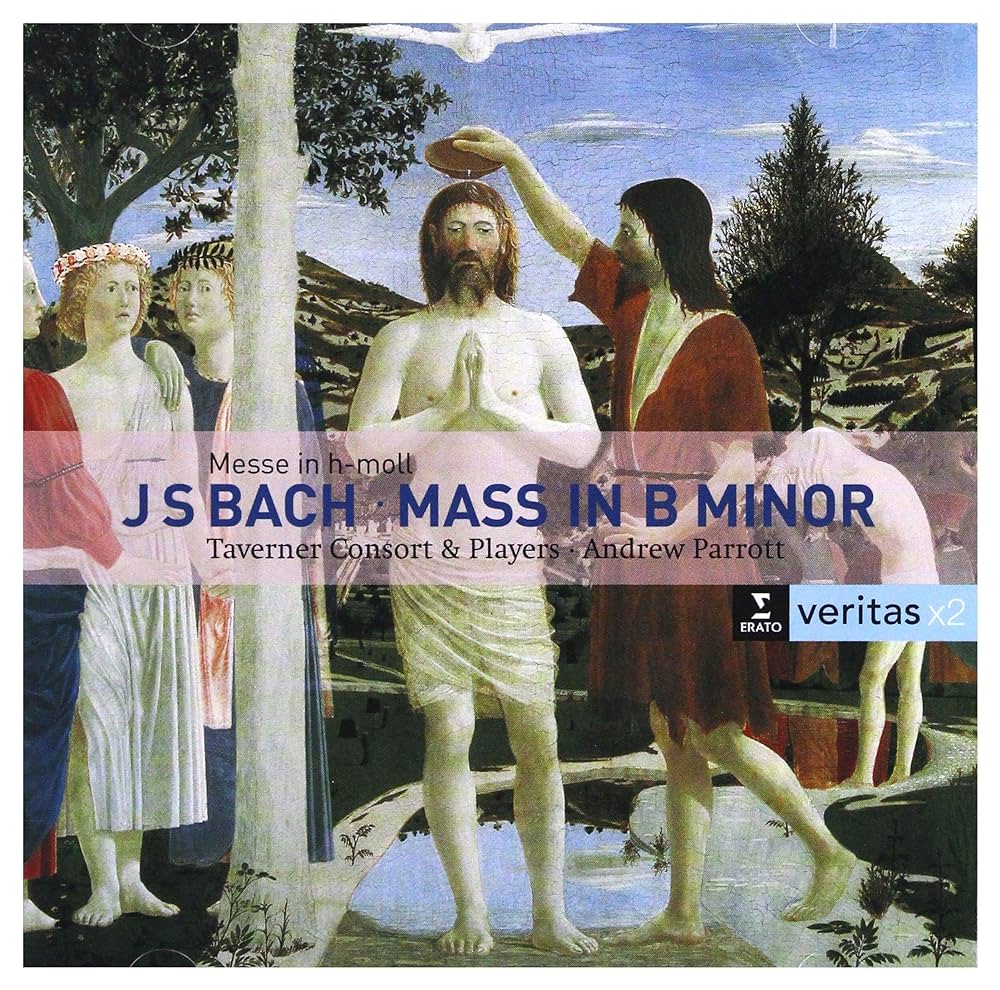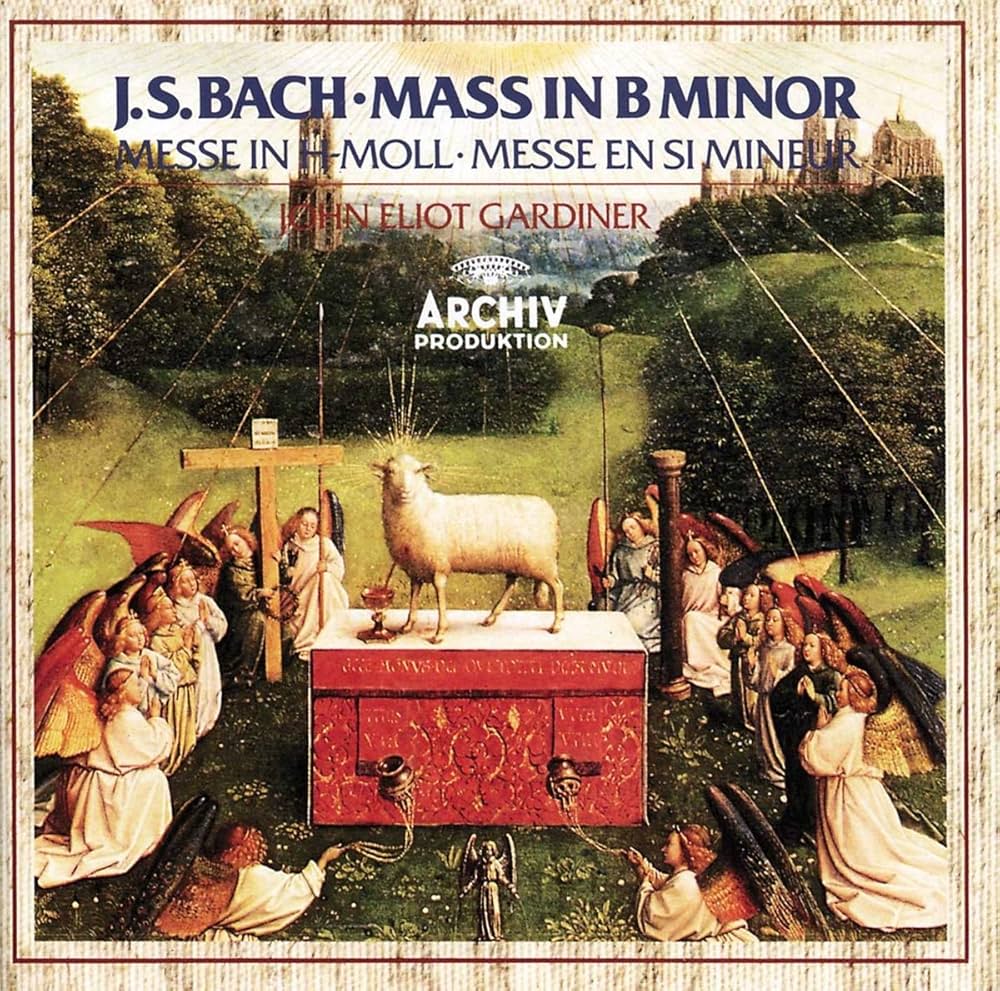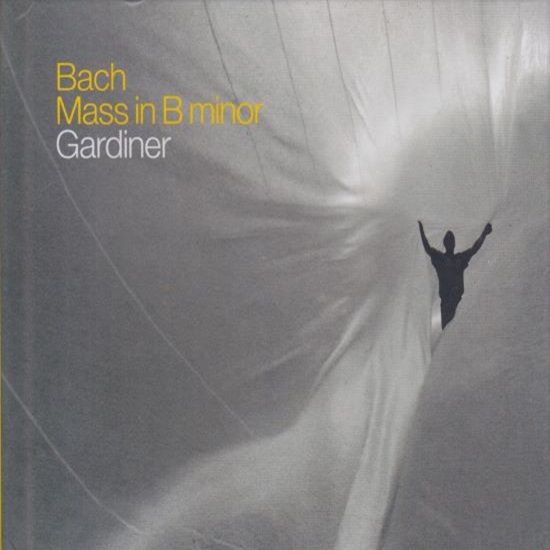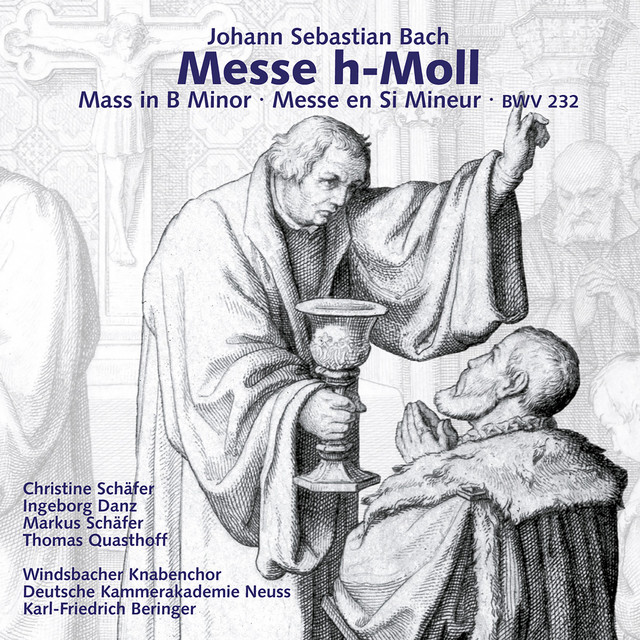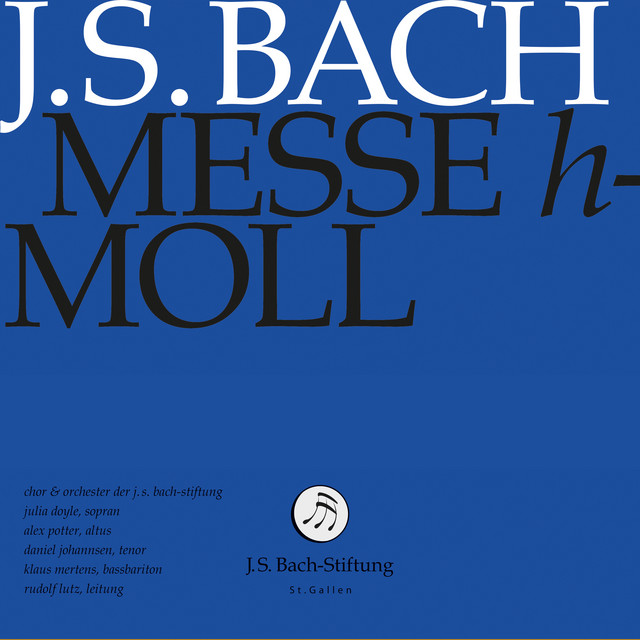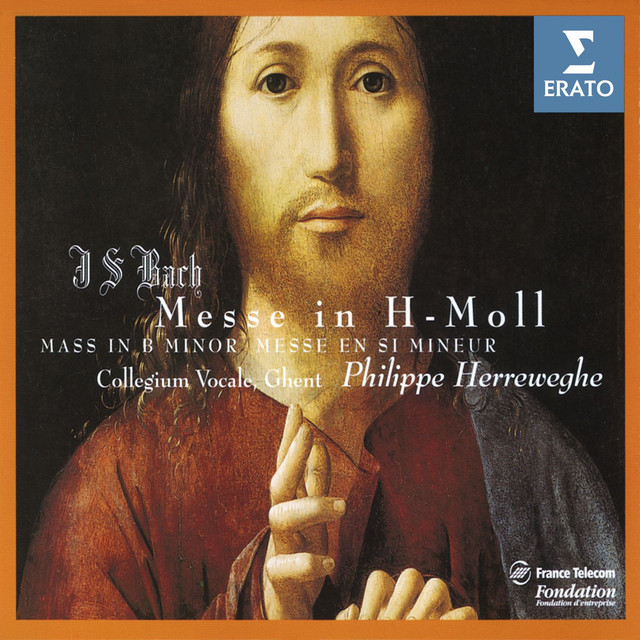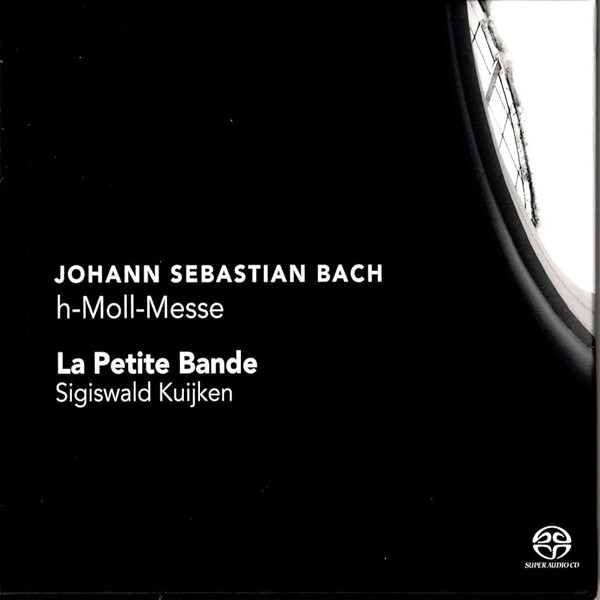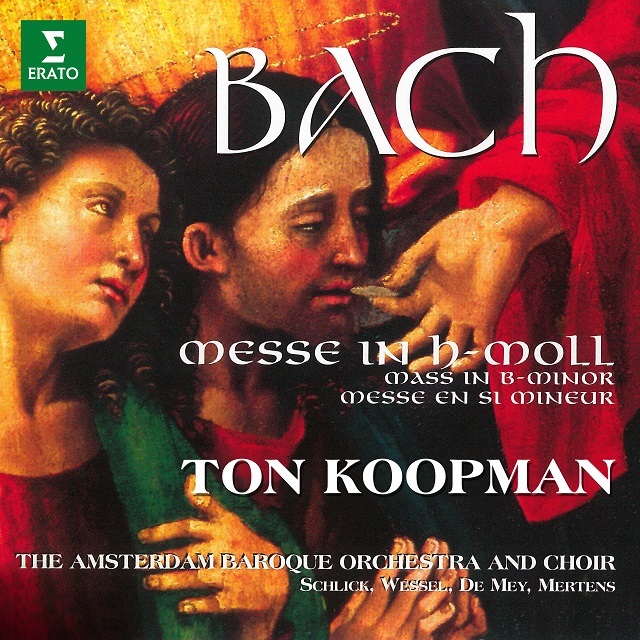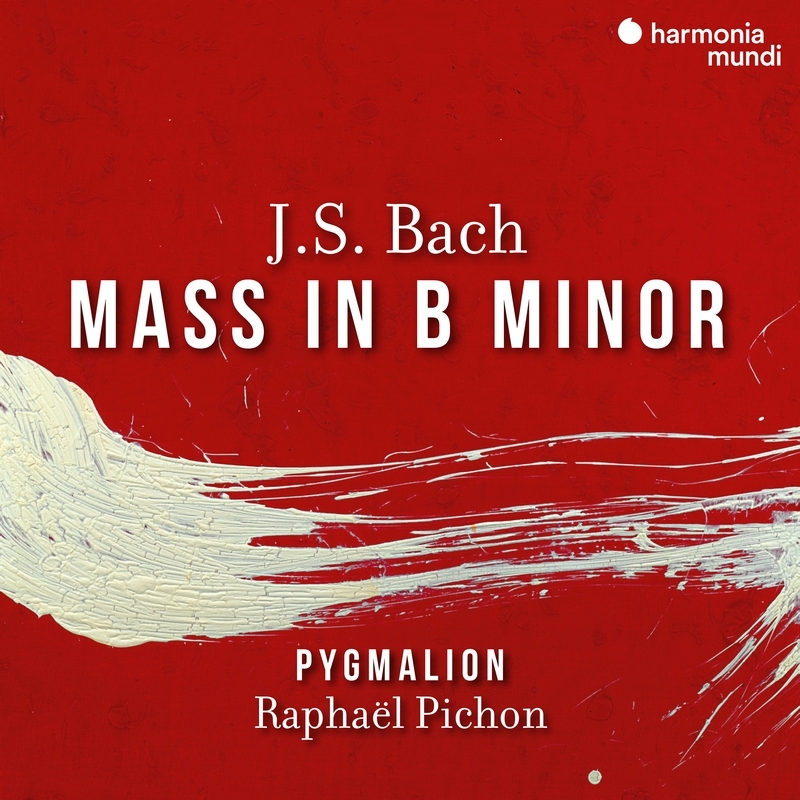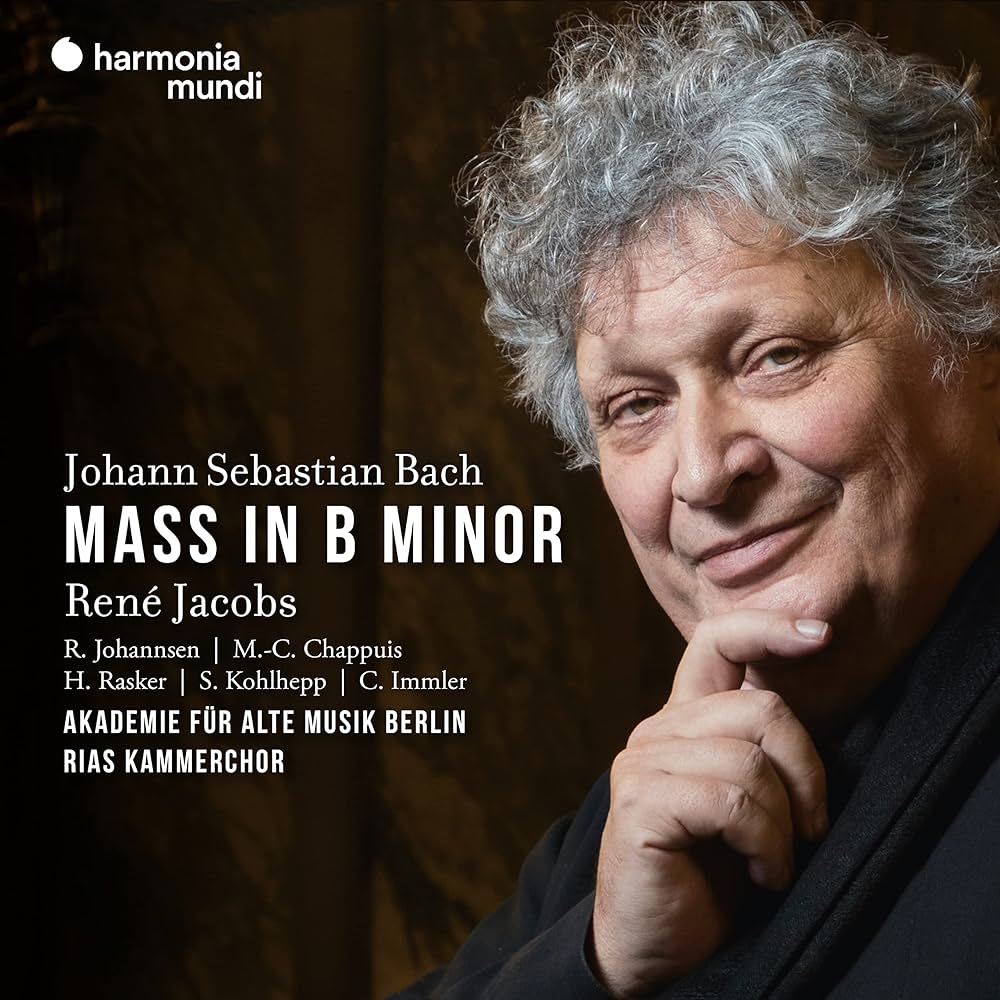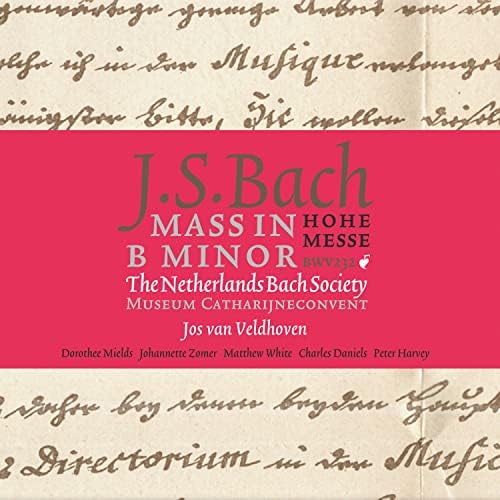Bach: Mass in B minor / Gustav Leonhardt, La Petite Bande, etc.
The performance forms of this piece can be roughly divided into the following four.
A. Performances using boys for both soloists and chorus
B. Performances using female or countertenor soloists and using boys in chorus only
C. Performances using female or countertenor soloists and female chorus
D. Other
Only ⑤ has the performance form of A I would like to see more of this type of performance in the future, but I understand that it is quite difficult. The performance forms of B are ②, ③, ④, and ⑬ (③ is the only one that uses modern pitch and modern instruments). Of the remaining 15, 14 are C. D is a performances using a boy only for the alto. Of C and D, there are three that are OVPP (one person per part in the chorus) (⑥, ⑧, ⑭). As for ⑧, as mentioned above, it has an irregular form using a boy for the alto. There are times when the Mass in B minor is different from other religious pieces by Bach, such as church cantatas. This is because Bach, a Lutheran composer, wrote Catholic masses, and the hypothesis is that Bach had the idea of performing the piece in the city of Dresden. In Dresden, there was a custom of using castrati for religious music, influenced by Italy. This may explain the difficulty of the soprano part. However, the performance example in ⑤ proves that it is not impossible for a boy to sing it.
Next, the question arises: did Bach really compose this piece to be actually performed? Handel and Telemann only composed music that was “guaranteed to sell” and “practical”, whether it was opera or instrumental music. However, Bach had several pieces in which the purpose was “composing” rather than “performing”. These include “The Art of Fugue”, “Musical Offering” and this “Mass in B Minor”. I don’t think there were any amateur performers who performed “The Art of Fugue” in Bach’s time. There is no evidence that King Hudrich used the handwritten score of “Musical Offering”. Because of its length, “Mass in B minor” was not considered a practical mass. However, 300 years later, these pieces of music have become a great legacy and are being performed all over the world. By making them into CDs, people all over the world can listen to them.
As I listen to the various recordings, I have a thought. Though I became to think this piece can be performed by “OVPP”. For now, let’s put aside the question of whether it is historical or not. That’s what I thought. Of course, a lot of it is due to “recording technology”. It’s hard to imagine an OVPP that can compete with three trumpets and timpani. However, there is no flaw in the recording at least I listen to. On the contrary, the sharp tone of each part by one person is even very pleasant. Kirkby and Ikonomou’s performances in ⑧ are particularly noteworthy. In particular, Panayotis Ikonomou’s boy alto is wonderful. Finally, I would like to refrain from evaluating the CD this time. Each soloist and choir gave a wonderful performance, and it was difficult to say which was better. Everyone, please compare the devices together. #baroque #bach #mass #片山俊幸
https://excelkobo.net/bachwerke/archive/BWV0232.pdf
① La Petite Bande (Gustav Leonhardt) 1985
② Concentus Musicus Wien(Nikolaus Harnoncourt)1968
③ Gewandhausorchester Leipzig(Andreas Reize)2022
④ Leipziger Barockorchester(Georg Christoph Biller)2000
⑤ The King’s Consort(Robert King)1996
⑥ The Bach Ensemble(Joshua Rifkin)1981
⑦ Bach Collegium Japan(Masaaki Suzuki)2007
⑧ Taverner Consort(Andrew Parrott )1984
⑨ Orchestra of the 18th Century(Frans Brüggen)2009
⑩ English Baroque Soloists(John Eliot Gardiner)1985
⑪ English Baroque Soloists(John Eliot Gardiner)2015
⑫ J.S. Bach Foundation Orchestra(Rudolf Lutz)2016
⑬ Deutsche Kammerakademie Neuss(Karl-Friedrich Beringer)1994
⑭ La Petite Bande(Sigiswald Kuijken)2000
⑮ Collegium Vocale Gent(Philippe Herreweghe)1988
⑯ Amsterdam Baroque Orchestra(Ton Koopman)1994
⑰ Ensemble Pygmalion(Raphael Pichon)2020
⑱ Akademie für Alte Musik Berlin (René Jacobs)2021
⑲ Nederlandse Bachvereniging(Jos van Veldhoven)2006
